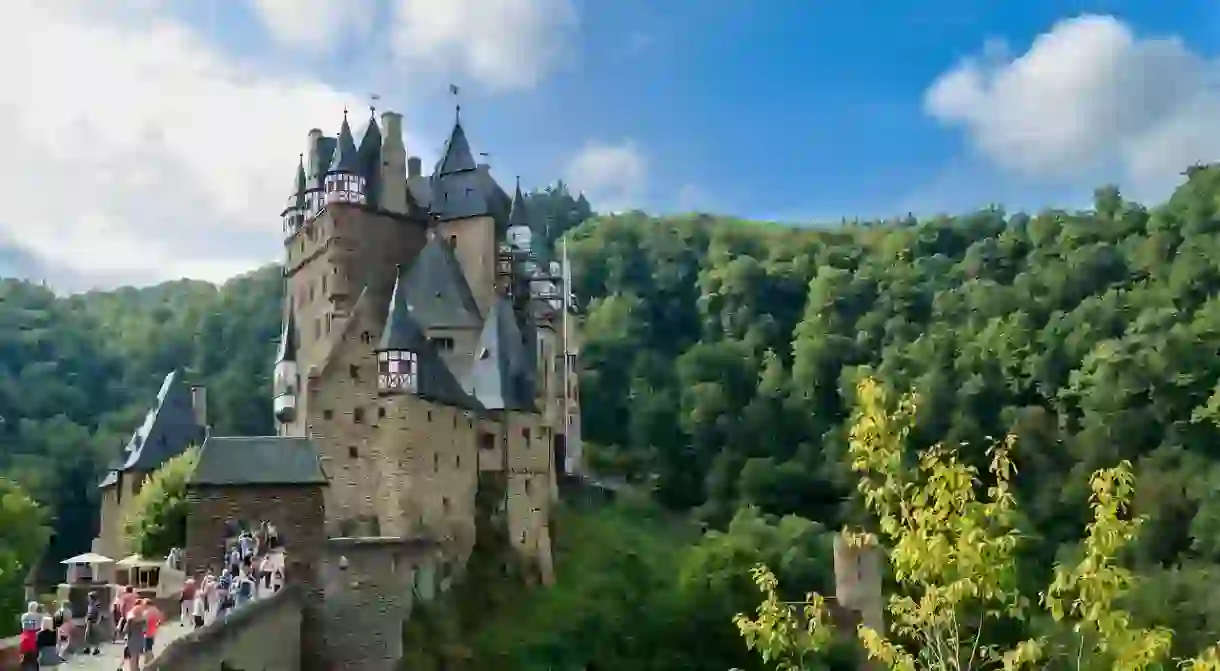The Best Things to Do in Rhineland-Palatinate, Germany

The Romantic Rhine, ancient Roman sites, beautiful medieval castles and vineyards for days – the Rhineland-Palatinate state of Germany offers wow-inducing sights and fun activities. We’ve picked the best things to do in the area and came up with this list.
Take a cruise on the Rhine river
The Upper Middle Rhine Valley between Koblenz and Bingen is home to some of the most beautiful scenery Germany has to offer, and a cruise is a perfect way to explore the glorious landscape. A trip up or down the Rhine river takes you along the vine-clad hills of the valley, several medieval castles and fortress ruins, dreamy villages and myth-enshrouded rock formations. Day trips allow you to hop on and off wherever you like to get a closer look at the attractions, try local foods or sample the region’s best wines.

Marvel at Speyer Cathedral
There are many reasons to visit Speyer, the main one being to visit the world’s oldest remaining Romanesque cathedral. Construction of Speyer’s red sandstone church began under Conrad II in 1030, and even though the cathedral was expanded and altered several times and the region faced several wars since, it has maintained many of its Romanesque features. The vaulted nave and the four towers, which mark each corner of the building, are typical for that era, and in 1925 Pope Pius XI awarded the landmark the honorary title Basilica Minor, and in 1981 the UNESCO followed suit and added Speyer Cathedral to its list of World Heritage Sites.
Visit Eltz Castle
Burg Eltz is the epitome of a medieval castle. Perched on a rock in the midst of a forest, the grey-shingled turrets are the first thing you see before you step onto the cobbled bridge that takes you to the main portal. The thick walls of bricks and red-and-white timber structures hold the stories of 850 years. Once you’re done getting some epic Instagram shots, step inside. Guided tours give you a chance to travel back in time and explore the treasury, armoury, the old kitchen and furniture and a lot more.

Drink all the wine
The Rhineland-Palatinate state is serious wine country. Vineyards populate the steep slopes along the Rhine, Moselle and Saar Rivers and produce award-winning Rieslings, Pinot Noirs and other varieties. Not booking yourself in for at least one wine tasting while you’re in the area would be a wasted opportunity. Join a vineyard and cellar tour, stop by the wine taverns of Cochem and Bacharach, or time your visit for September so you can attend the world’s largest wine festival in Bad Dürkheim.
Learn about Germany’s Roman legacy
Out of all the ancient Roman settlements in western Germany, Trier is the city that boasts the most impressive relics of the time. Standing in front of the Porta Nigra will have you shaking your head in disbelief imagining that the imposing gate has stood here since 180 AD. Other UNESCO-listed sites in the city have a similar effect, including the Imperial bathhouses and the gigantic amphitheatre, which saw 20,000 spectators and bloody fights between gladiators and animals in its time.

Feel like a race car champion
As far as sports venues go, the Nürburgring is a must-see. The impressive race court fits 150,000 motorsports fans from all over the world who come here to watch race car drivers take on the parkour at head-spinning speeds – the lap record is still held by Germany’s legendary seven-time world champion Michael Schuhmacher. But how do you feel about getting behind the wheel yourself? The venue offers a myriad of packages – you can take your own car onto the track, join as a co-pilot, book race car driving training or, if that’s too much adrenaline for you, the behind-the-scenes tour is definitely worth the money.
See the Deutsches Eck headland
Koblenz is a combination of everything we have just mentioned. The city sits at the confluence of the Rhine and Moselle Rivers and dates back to 9 BC, when the Romans erected a military post here. Don’t miss out on a cable-car ride across the river and up to Ehrenbreitstein Fortress. From here, you can enjoy panoramic views of the Deutsches Eck headland and the oversized statue of Wilhelm I, Germany’s first Emperor who unified Germany after the Franco-Prussian War.














